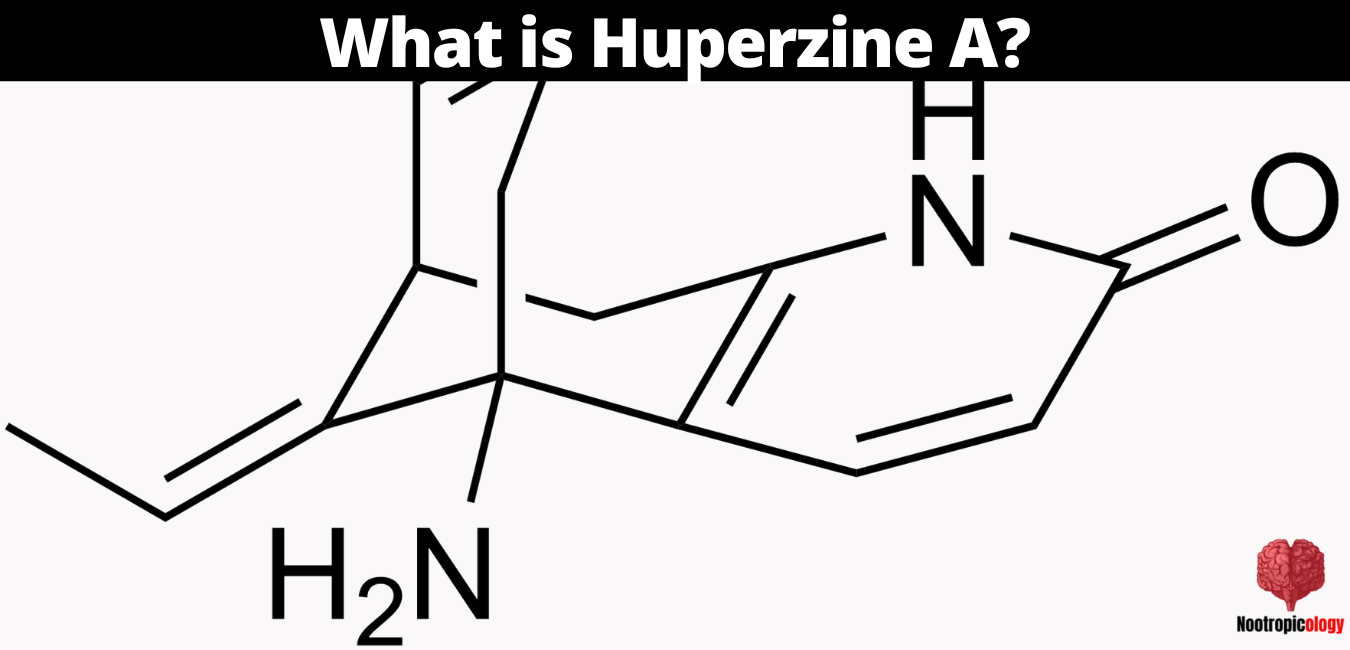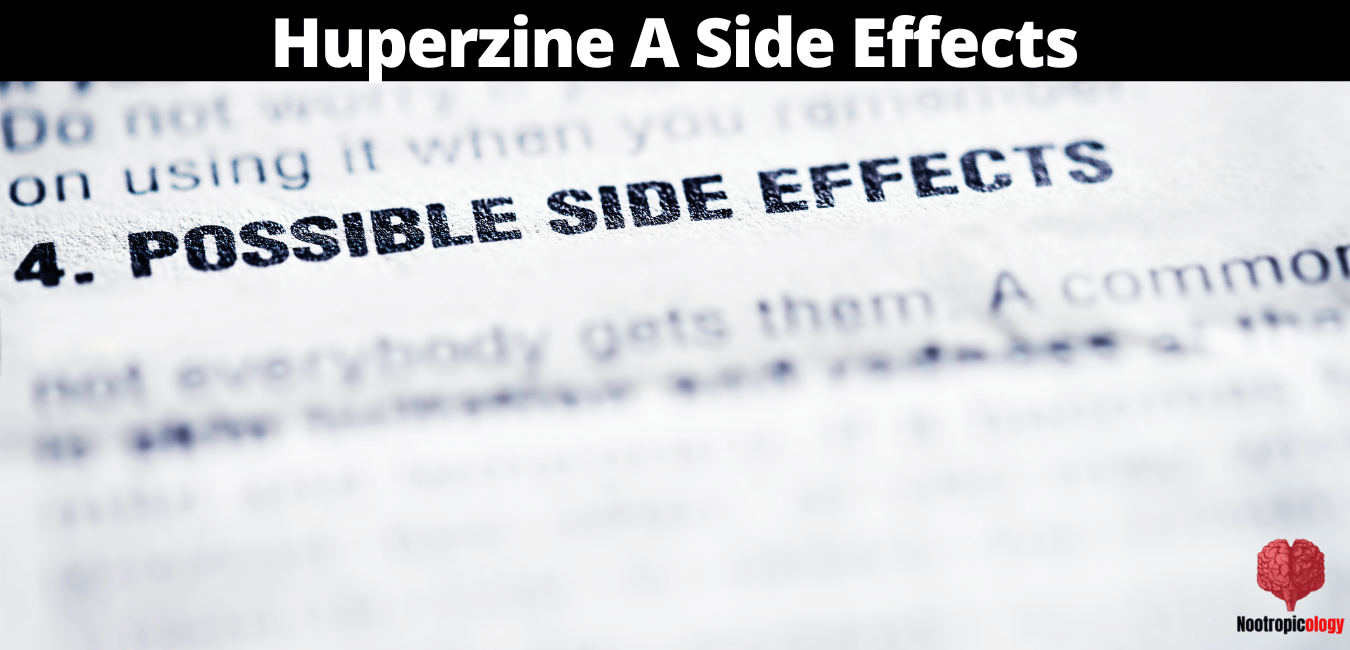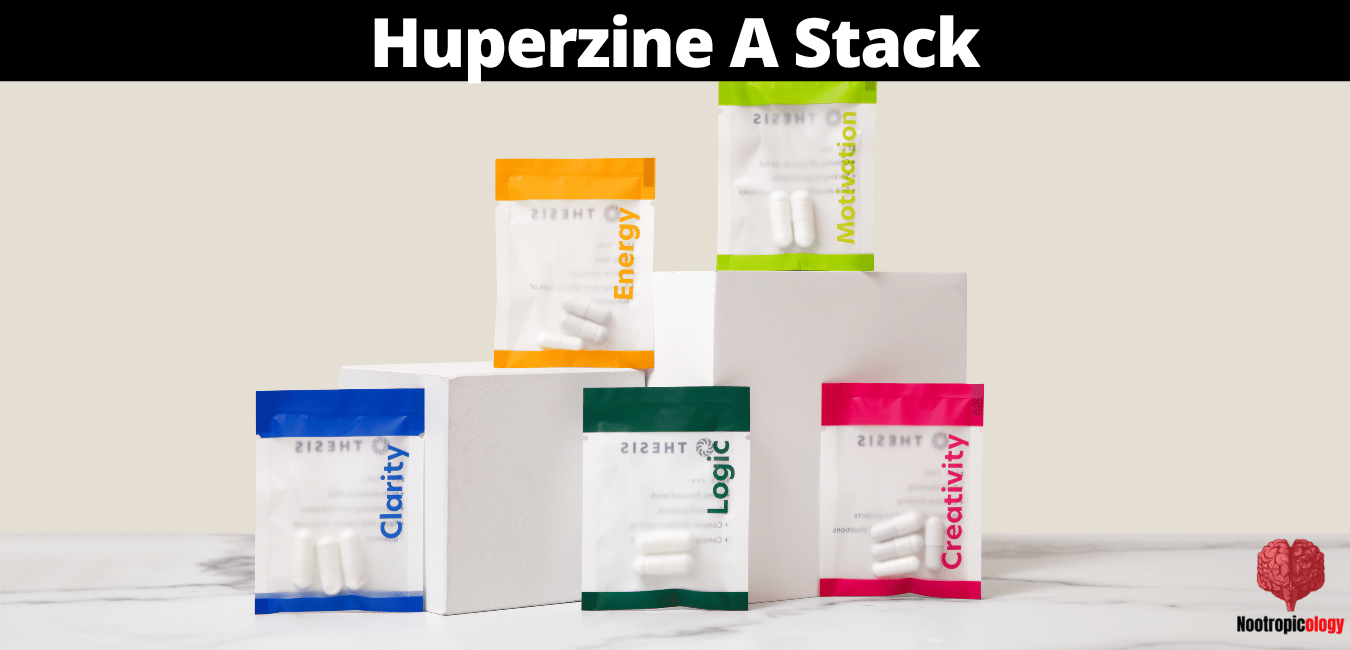Huperzine A Nootropic Review: Benefits, Side Effects & Dosage
Over the years, my journey into the realm of cognitive enhancement has been nothing short of captivating...
Ever since my first encounter with nootropics, I've been spellbound by the promise they hold for human potential. As someone deeply invested in understanding the intricacies of the mind and the myriad substances that can amplify its capabilities, I've sifted through countless research papers, experimented with a plethora of compounds, and engaged in endless conversations with fellow noot enthusiasts.
Huperzine A caught my attention when I stumbled upon a few anecdotal testimonies discussing its profound impact on memory.
As a relentless seeker of knowledge, anything that promises to sharpen recall or improve cognitive function is worth exploring in my book. But what genuinely piqued my curiosity was its historical roots in traditional Chinese medicine.
Could a herb, revered for centuries, hold the key to modern-day cognitive enhancement?
However, as with all substances I delve into, I remain a staunch advocate for evidence-based reviews. While personal stories and historical contexts offer rich insights, it's the rigorous scientific data that truly ascertain a compound's worth.
So, in the following sections, I'll be sharing my comprehensive review of Huperzine A, melding personal experience with scientific scrutiny.
My hope is that by the end, you'll have a clearer understanding of what this nootropic offers and whether it's right for you.
What is Huperzine A (Overview)?


In the vast landscape of nootropics, Huperzine A (HupA) stands out not just for its efficacy, but also for its deep-rooted history in traditional medicine.
To truly appreciate its significance and potential benefits, we must first journey through its origin, ancient applications, and the scientific underpinnings of its mechanism.
Scientific Classification and Origin
Huperzine A is a naturally occurring alkaloid derived from the Chinese club moss plant, scientifically known as Huperzia serrata.
This plant, with its delicate appearance and fern-like attributes, thrives in the damp woodlands and forests of Asia. But beneath its unassuming exterior lies a compound that has garnered attention from both ancient herbalists and modern neuroscientists.
Huperzine A: Historical Usage in Traditional Medicine
Long before it made its mark in the nootropic community, Huperzine A, under the moniker 'Qian Ceng Ta', was a staple in traditional Chinese medicine. Ancient practitioners recognized its potential, utilizing it mainly for its rejuvenating properties and to combat fever and inflammation.[1]
However, its potential benefits for memory and cognition were anecdotes whispered through generations, and it's fascinating to see how these tales have now converged with modern scientific inquiry.
How Does Huperzine A Work as a Nootropic (Mechanism of Action)
At its core, the efficacy of Huperzine A as a cognitive enhancer stems from its role as an acetylcholinesterase inhibitor. Acetylcholinesterase (AChE) is an enzyme responsible for breaking down the neurotransmitter acetylcholine. By inhibiting this enzyme, Huperzine A effectively increases the levels of acetylcholine in the brain.[2]
Acetylcholine plays a crucial role in numerous cognitive functions, including memory formation, attention, and learning capacity. By boosting its availability, Huperzine A offers a direct pathway to enhanced cognitive performance, shedding light on its popularity within the nootropic community.
Reported Benefits of Huperzine A as a Nootropic


Huperzine A's growing reputation in the realm of cognitive enhancers is not without merit.
As we delve into the various benefits attributed to this compound, it becomes evident that science and traditional knowledge intertwine, creating a tapestry of potential health enhancements that are both exciting and worthy of deeper exploration.
Memory Enhancement
One of the most talked-about benefits of Huperzine A is its potential to bolster memory. Delving into clinical studies available on Pubmed, we find substantial evidence pointing towards improved memory retention. Notably, these studies encompass a diverse demographic, indicating positive effects in both young adults and the elderly.[3]
This suggests that regardless of age, Huperzine A might offer a beneficial edge in recalling information and improving overall cognitive recall.
Neuroprotection
Beyond its memory-enhancing capabilities, Huperzine A has also been spotlighted for its neuroprotective attributes. Rigorous data underscores its protective prowess against a range of neurotoxins, potentially safeguarding delicate neural structures from harm. Furthermore, its role in Alzheimer's disease has been of particular interest.[4]
Preliminary studies indicate that this compound might offer therapeutic benefits, slowing the progression of the disease and improving cognitive function among affected individuals.
Antioxidant Properties
Oxidative stress is a silent assailant, often implicated in a range of neurological disorders and age-related cognitive decline. Here, Huperzine A once again steps into the limelight. The research elucidates its robust antioxidant properties, suggesting its ability to combat oxidative stress, thereby potentially shielding our brains from the deleterious effects of free radicals.[5]
This not only positions it as a potent nootropic but also hints at its broader health implications.
Aid in Combating Depressive Symptoms
Depression, with its intricate interplay of neurochemistry and emotions, often remains elusive in terms of effective treatments. In this challenging context, Huperzine A emerges as a potential beacon of hope. While research is still in its infancy, preliminary studies and anecdotal reports have started painting an optimistic picture.[6]
They highlight Huperzine A's potential in alleviating some depressive symptoms, offering a ray of hope to those searching for novel treatment avenues.
Huperzine A: Side Effects and Concerns


In the vast landscape of nootropics and health supplements, it's paramount to tread with a balanced perspective. While we've explored the promising potential of Huperzine A, it's equally crucial to address the concerns and side effects associated with it.
This section aims to shed light on those nuances, ensuring an informed approach when considering this compound.
Common Side Effects
No compound, regardless of its benefits, is exempt from potential side effects. With Huperzine A, some of the more frequently reported adverse reactions encompass symptoms like nausea, dizziness, and insomnia. These observations stem largely from patient reports and clinical studies.[7]
While many individuals tolerate Huperzine A well, it's essential to be aware of these potential side effects and monitor one's reactions closely, especially during the initial stages of supplementation.
Rare but Serious Side Effects
While common side effects can be unsettling, there are rarer but potentially more serious consequences to be aware of. Notably, there have been instances of hypertension (elevated blood pressure) and an unexpected decrease in heart rate among users.
While these occurrences are sporadic, the gravity of such side effects warrants caution and emphasizes the importance of monitoring one's health, particularly if there are underlying conditions or susceptibilities.
Interactions with Other Drugs
Any supplement's interaction potential with other medications is a pivotal aspect to consider. Huperzine A is no exception. There is a need for heightened caution when it's taken concurrently with medications affecting the cholinergic system. Such interactions could amplify the effects of both the drug and Huperzine A, potentially leading to overstimulation or adverse side effects.
It's always prudent to consult with a healthcare professional before commencing any new supplement, especially if you're already on a medication regimen.
My Personal Experience with Huperzine A
My journey with Huperzine A has been a series of lessons, surprises, and valuable insights.
From identifying the perfect dosage to experimenting with stacks and even cycling, every step provided a unique understanding of this intriguing nootropic.
Below, I'll share some of my journey with you...
Dosage Explorations
The initial allure of Huperzine A for me was its acclaimed cognitive benefits. Eager to experience this firsthand, I began my trials. While the lower doses were subtle, ramping up the quantity led to enhanced clarity and sharper focus. However, crossing a certain threshold brought mild nausea to the forefront.
This reinforced the age-old adage - moderation is key. It's crucial to strike a balance, ensuring maximum benefits with minimal side effects. From my experience, gradual incrementation, observing how one's body responds, is the best approach.
Huperzine A Stacking Adventures
Venturing beyond standalone use, I delved into stacking Huperzine A with other nootropics. One particular stack, pairing it with Alpha GPC, a choline source, seemed promising. The synergy was evident: While Huperzine A prevented the breakdown of acetylcholine, Alpha GPC provided an additional boost to this neurotransmitter.
This combo magnified focus and memory retention, but I'd advise newcomers to approach with caution and start with lower doses when stacking.
The Importance of Cycling Huperzine A
Continued use of any nootropic can sometimes lead to tolerance, diminishing its effects.
To circumvent this, I integrated cycling into my regimen — alternating periods of usage with breaks. For instance, after five days of consecutive use, I'd give it a two-day pause. This approach not only rejuvenated the nootropic's efficacy but also reduced the onset of side effects.
Experiments and Insights
Being a nootropic enthusiast, I was keen to experiment further. Combining Huperzine A with meditation sessions yielded fascinating results. The heightened focus from the supplement complemented the mindfulness practices, resulting in deeper and more restorative sessions.
Additionally, I found that taking the supplement earlier in the day, post-breakfast, minimized sleep disturbances, an occasional side effect.
Overall, Huperzine A has been a captivating chapter in my nootropic journey. From dosage adjustments to stack explorations, each phase was a revelation. The key, I've come to realize, is flexibility, awareness, and an undying spirit of curiosity.
Huperzine A Dosage Recommendations and Considerations


Every individual's physiology is distinct, making the journey with nootropics, such as Huperzine A, highly individualized.
That said, grounding oneself in recommended dosages and carefully navigating adjustments can make the experience smoother and safer.
Standard Huperzine A Dosage Recommendations
Huperzine A's dosage in clinical trials often varies, but a common starting point is around 50 to 200 mcg daily.
This range is based on both its historical usage in traditional Chinese medicine and recent clinical trials. Higher dosages might offer pronounced effects, but they also come with an elevated risk of side effects.[8]
Personal Adjustments and Titrations
During my exploration of Huperzine A, I commenced with a conservative dose, allowing me to gauge its effects and any potential side effects. Over time, guided by both my research and personal experience, I adjusted the dosage to optimize benefits while minimizing discomfort.
Remember, while there are general guidelines, the optimal dosage might differ from person to person. It's a delicate balance between efficacy and safety, necessitating a careful, stepwise approach.
Duration and Cycling
It's worth noting that continuous, long-term usage of Huperzine A might not be ideal. Some experts advocate for cycling the supplement, perhaps using it for a few weeks followed by a week off. This approach can potentially mitigate tolerance buildup and minimize side effects.
My journey echoed this sentiment, with breaks ensuring that the nootropic remained effective without causing undue side effects.
Huperzine A Interaction with Other Nootropics
Another intriguing dimension of the nootropic world is the potential for synergistic effects when various compounds are combined. In the context of Huperzine A, co-supplementation with choline sources, like Alpha-GPC, could potentially amplify cognitive benefits.
However, caution is the watchword here. Always be wary of potential interactions, both positive and negative, when combining supplements.
Optimal Dosage and Duration For Nootropic Benefits
For most, the recommended dosage ranges between 50 to 200 mcg daily. However, individual tolerance can vary widely.
During my experimentation, I found that a dosage of 100 mcg daily was optimal for my needs. This quantity seemed to give me the cognitive boost I sought without pushing me into the realm of adverse effects.
I'd recommend anyone new to Huperzine A start on the lower end and work their way up, gauging how their body reacts at each increment.
Furthermore, I discovered that the duration Huperzine A remains in the system plays a pivotal role in its effects. With its half-life being approximately 10-14 hours, one must be strategic about its timing, especially if avoiding sleep disturbances is a priority.
Combining Huperzine A with Other Nootropics


The world of nootropics is intriguingly vast and dynamic, offering a plethora of combinations, often referred to as "stacks", which are believed to amplify the benefits of individual substances.
Huperzine A, given its distinct mechanism of action as an acetylcholinesterase inhibitor, presents a prime candidate for such combinations. Delving into its interplay with other nootropics offers a deeper understanding of its potential.
Popular Stacks with Huperzine A
Many nootropic enthusiasts and biohackers have found certain stacks involving Huperzine A particularly effective. A popular stack combines Huperzine A with racetams, such as Piracetam or Aniracetam. This pairing seeks to harness the racetams' modulation of the AMPA receptors and Huperzine A's acetylcholine-enhancing properties for an amplified cognitive boost.
Another favored combination involves pairing Huperzine A with a choline source like Alpha-GPC or Citicoline. Given that Huperzine A increases acetylcholine levels by inhibiting its breakdown, providing the brain with additional choline (a precursor to acetylcholine) seems logical. This combination can often result in enhanced memory retention and improved mental clarity.
Synergistic Effects with Other Racetams or Choline Sources
The synergy between Huperzine A and other nootropics is not purely anecdotal; there's a scientific rationale behind it. Racetams, particularly Piracetam and Aniracetam, modulate neurotransmitter receptors, leading to improved communication between neurons. When combined with Huperzine A, which ensures elevated acetylcholine levels (ACh), the resultant effect can be heightened cognition, improved memory, and even enhanced creativity.
Similarly, the concomitant use of Huperzine A with choline sources serves a dual purpose: While Huperzine A ensures that acetylcholine is not broken down rapidly, the choline supplements ensure that there's ample raw material for the production of new acetylcholine molecules. This dual-action can result in sustained cognitive enhancement over extended periods.
Comparing Huperzine A to Other Acetylcholinesterase Inhibitors
Acetylcholinesterase inhibitors (AChEIs) have gained prominence in the realm of cognitive enhancement and as therapeutic agents for neurodegenerative disorders.
They function primarily by inhibiting the enzyme responsible for breaking down acetylcholine, a vital neurotransmitter associated with memory and cognition. While Huperzine A has found its niche among nootropics enthusiasts and traditional medicine practitioners, there are other mainstream AChEIs, such as Donepezil, frequently prescribed in modern medicine.
How does Huperzine A compare with these, and where does it stand in the pantheon of acetylcholinesterase inhibitors?
Overview of Acetylcholinesterase Inhibitors Like Donepezil
Donepezil, more commonly recognized under its brand name Aricept, is a pharmaceutical drug often prescribed for Alzheimer's disease. Its primary function is to boost cognitive function by increasing the levels of acetylcholine in the brain, similar to the action of Huperzine A.
Donepezil and other similar drugs like Rivastigmine or Galantamine have been subjected to rigorous clinical trials, cementing their position in the pharmaceutical world for the management of Alzheimer's and other forms of dementia.[9]
Effectiveness, Side Effects, and Dosage Comparisons
When comparing the effectiveness of Huperzine A to Donepezil, both compounds show promise in enhancing memory and cognition, albeit with different potency and duration.
Some studies suggest that Huperzine A might possess a quicker onset of action, but Donepezil's effects might be more prolonged due to its longer half-life.
In terms of side effects, both Huperzine A and Donepezil can cause nausea, dizziness, and insomnia. However, Donepezil, given its potent nature and primary use for more severe conditions, might also be associated with more serious side effects like cardiac disturbances in certain individuals.
Dosage comparisons are a bit tricky, given the stark difference in the nature of their use. While Huperzine A dosages might range from 50 to 200 micrograms daily for cognitive enhancement, Donepezil dosages typically start at 5mg daily for Alzheimer's patients, possibly increasing to 10mg based on the patient's response and doctor's recommendation.
Frequently Asked Question (FAQ)
How long does it take for Huperzine A to show noticeable cognitive effects?
The onset of cognitive effects from Huperzine A can vary among individuals. Generally, improvements in memory and cognition can be noticed within 1-2 weeks of consistent use, although some users report experiencing benefits within just a few days. As with all nootropics, it's essential to monitor individual responses and adjust dosage accordingly.
How is Huperzine A metabolized in the body?
Huperzine A is metabolized primarily in the liver and is excreted in urine. Its half-life ranges from 10 to 14 hours, which means it remains in the system for a significant duration, influencing its dosing intervals.
Can Huperzine A be taken daily?
While some users take Huperzine A daily, it's often recommended to cycle its usage, e.g., 5 days on, 2 days off, to prevent potential tolerance and to give the cholinergic system a break.
Is it safe for teenagers to use Huperzine A for studying?
While some studies have shown benefits in memory retention among younger individuals, the safety of Huperzine A in teenagers has not been extensively researched. It's always best to consult with a healthcare professional before starting any nootropic regimen, especially in younger populations.
Are there any foods or supplements that can enhance the effects of Huperzine?
Some users stack Huperzine A with choline sources, like Alpha-GPC or CDP-Choline, to potentially enhance cognitive benefits. However, it's essential to approach such combinations with caution and start with lower dosages to assess individual tolerance.
How does Huperzine A compare to natural dietary sources of choline?
While both Huperzine A and dietary choline sources can benefit the cholinergic system, they work differently. Dietary choline is a precursor to acetylcholine, while Huperzine A inhibits the enzyme that breaks down acetylcholine. This means Huperzine A can increase acetylcholine levels indirectly, whereas dietary choline can increase it directly.
My Final Thoughts on Huperzine A
Navigating the intricate world of nootropics has been nothing short of a roller-coaster ride. Among the myriad of compounds I've explored, Huperzine A stands out, not merely for its traditional roots but for its confluence with modern scientific validation.
From its roots in Chinese medicine to its validation in today's scientific community, Huperzine A has showcased significant promise as a cognitive enhancer. Its dual role as both a memory booster and a neuroprotectant sets it apart in a saturated market. I've personally witnessed the clarity it brings, the subtle elevation in cognitive prowess, and the improved retention of information. These benefits have often made my days more productive, my tasks more manageable, and my cognitive challenges less daunting.
However, like all substances, it doesn't come without its caveats. The mild nausea and occasional dizziness served as reminders that even natural derivatives demand respect and careful dosing. Experimenting with its synergy with other nootropics provided mixed results - illuminating the intricate balances our neurochemistry adheres to.
Moreover, while its comparison to pharmaceutical AChEIs like Donepezil was intriguing, it reinforced a valuable lesson. While overlap exists, each substance caters to different needs and populations. And while Huperzine A might be a potent tool for the everyday individual seeking cognitive upliftment, it's essential to remember its traditional role and its emerging position in the management of neurodegenerative diseases.
In closing, Huperzine A, to me, represents the epitome of what a nootropic should be - rooted in tradition, backed by science, and potent yet gentle when respected. As with all nootropics, an informed, evidence-based approach combined with personal vigilance ensures optimal benefits with minimal setbacks.
Would I continue my journey with Huperzine A?
Absolutely. But always with an ear to the ground, listening to both the whispers of tradition and the loud clarions of modern science.
- “Huperzine A.” Drugs in R&D vol. 5,1 (2004): 44-5. doi:10.2165/00126839-200405010-00009 ↑
- Cheng, D H et al. “Huperzine A, a novel promising acetylcholinesterase inhibitor.” Neuroreport vol. 8,1 (1996): 97-101. doi:10.1097/00001756-199612200-00020 ↑
- Sun, Q Q et al. “Huperzine-A capsules enhance memory and learning performance in 34 pairs of matched adolescent students.” Zhongguo yao li xue bao = Acta pharmacologica Sinica vol. 20,7 (1999): 601-3. ↑
- Damar, U et al. “Huperzine A as a neuroprotective and antiepileptic drug: a review of preclinical research.” Expert review of neurotherapeutics vol. 16,6 (2016): 671-80. doi:10.1080/14737175.2016.1175303 ↑
- Pohanka, Miroslav et al. “Huperzine induces alteration in oxidative balance and antioxidants in a guinea pig model.” Neuro endocrinology letters vol. 32 Suppl 1 (2011): 95-100. ↑
- Zheng, Wei et al. “Huperzine A for treatment of cognitive impairment in major depressive disorder: a systematic review of randomized controlled trials.” Shanghai archives of psychiatry vol. 28,2 (2016): 64-71. doi:10.11919/j.issn.1002-0829.216003 ↑
- Wang, Bai-Song et al. “Efficacy and safety of natural acetylcholinesterase inhibitor huperzine A in the treatment of Alzheimer's disease: an updated meta-analysis.” Journal of neural transmission (Vienna, Austria : 1996) vol. 116,4 (2009): 457-65. doi:10.1007/s00702-009-0189-x ↑
- Zhang, Hai-Yan. “New insights into huperzine A for the treatment of Alzheimer's disease.” Acta pharmacologica Sinica vol. 33,9 (2012): 1170-5. doi:10.1038/aps.2012.128 ↑
- Hansen, Richard A et al. “Efficacy and safety of donepezil, galantamine, and rivastigmine for the treatment of Alzheimer's disease: a systematic review and meta-analysis.” Clinical interventions in aging vol. 3,2 (2008): 211-25. ↑
